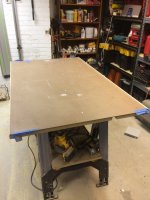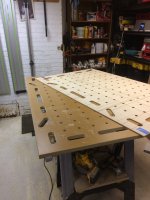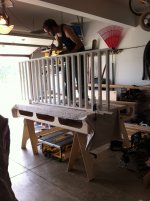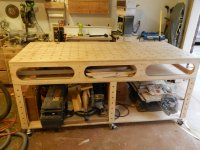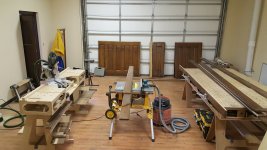MetalDemigod
Member
- Joined
- Oct 26, 2014
- Messages
- 29
Without getting too much into my workflow, and my tool list of have an have-nots, I would like to point out the reason I ask this question but make it briefly as possible. I feel my shop is finally closing in on the stage that I can begin to call it a shop (insert fireworks here). Some of the next additions to the shop that I think will make the biggest difference or some of those you just can't buy, Flip carts, chaos cabinets, MFT carf i.e. A few on my mind for the near future. I have determined that a purposed location for glue ups and assembly would probably be the most beneficial. I'm tired of bending down the garage floor, and producing substandard work as a result of not having a flat work surface to assemble. So my question is; given the info presented would the Ron Paulk workbench be a good solution for glue ups and assembly, while also providing a great service for breaking down she be a good solution for glue ups and assembly, while also providing a great service for breaking down sheet goods. Or is this workbench really not designed for that and maybe I should build a dedicated assembly table? Thanks for your experience and opinions and event experience and opinions in advance.
Ps. I do on an MFT/3 but I can't imagine many of you are using it for glue intensive assemblies?
Ps. I do on an MFT/3 but I can't imagine many of you are using it for glue intensive assemblies?


